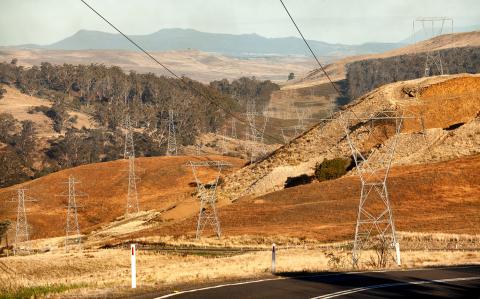IEEFA Update: Who Bob Murray Is, and What He Wants
Tom Sanzillo has a gimlet-eyed commentary up today piercing the coded talk Peabody Energy Glenn Kellow has been putting out lately around his save-the-company strategy. It banks on market intervention, that is, government action to reach in and keep his industry viable as natural gas and renewables take customers away.
Peabody, the largest non-state-owned coal company in the world, has gotten lots of press this year for having emerged from bankruptcy, but the question that gets overlooked a lot in its restructuring is how long it can last?
It’s gotten less press for how its plotting its course, angling for success on the backs of citizen taxpayers and electricity ratepayers.
A lesser-known but hardly unknown company—Murray Energy—is taking a similar tack.
Most Murray Energy mines are in Appalachia—northern West Virginia and southern Ohio. Peabody mines are all over the U.S. and in Australia as well. While Peabody is the big boy on the block—having sold 140.5 million tons of “coal delivered” in 2016, according to the energy data company SNL—Murray Energy is not insignificant (52.2. million tons in 2016). Both companies have reported increases in output this year, although it appears improbable they will continue to do so.
Murray, for the record, promotes itself as the largest underground mining company and is also the largest privately-owned one, which is say—unlike Peabody—you can’t buy stock in it. Nor examine its financials like you can Peabody’s.
The company is named for its founder and CEO, Bob Murray, who has been coal-industry famous for a long time but only approached household-name stature when he sued the comedian John Oliver this summer for making fun of him. He’s also sued the New York Times for an editorial it published about miner-safety protocols at Murray Energy. And the Charleston (W.V.) Gazette for writing about, among other things, Murray’s political activities and his company’s role in a Utah mine disaster that killed six miners. Just this month, Murray Energy sued CSX Transportation, the rail-freight company.
Murray is litigious. And he seems to be making it into the business and coal-trade press more and more these days, garnering headlines for going around saying climate change is a hoax, for being an unusually avid supporter of Donald Trump, and for being a regulation-rollback zealot.
So that’s who he is.
What does he want?
He has been agitating very recently for federal intervention in energy markets because his company—he says—will go under without such intervention.
Murray asked the Trump administration earlier this month (here’s the letter) to invoke a national emergency order that would keep money-losing coal-fired power plants from closing. Such closures have become commonplace in recent years as natural gas and renewables have taken more and more market share from coal-fired generation. Murray is worried specifically about plants in Ohio owned by FirstEnergy that get their coal from Murray mines.
The Trump administration turned Murray down on that one, but—as the record shows, including on how handled contract negotiation with his miners last year—Murray wants above all to win, even if that means having the government step in to save his bacon.
Karl Cates is IEEFA’s director of media relations.
RELATED POSTS:
IEEFA Update: Decoding Glenn Kellow’s Peabody Recovery Strategy (Subsidies, Handouts, Giveaways)
IEEFA Alert: Peabody’s Plan to Emerge From Bankruptcy Is Likely to End in Bankruptcy Again














